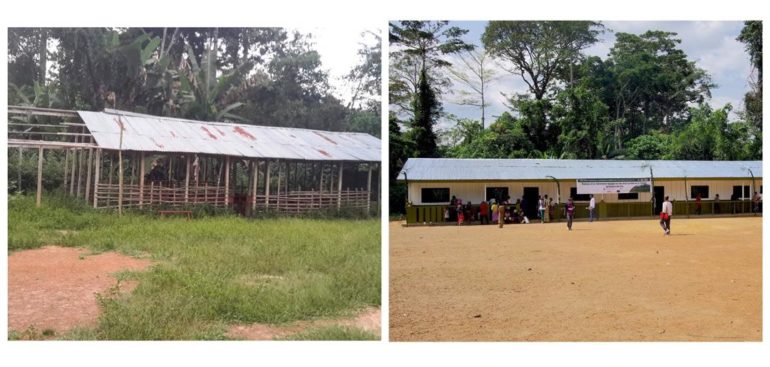In the small remote village of Dia, on the edge of the Messok Dja protected area, one of the last sanctuaries of forest elephants and great apes in the world, the children had not been to school for more than four years. closing.
The school consists of a new administrative building and three classrooms equipped with bench tables. The reopening of this school building contributes to SDG 4 which promotes children’s education, a human right and a force for sustainable development and peace.
In July 2016, Ezra and his friends celebrated the end of the school year. They didn’t know it was their last year of study: “No one could imagine that it was our last day of school”, he remembers.
“As a result, many children have not had access to education”, lamented Alfred Mengongo, secretary of the village of Dia. As a reminder, the village of Dia had its first school built in 1982. But the political crisis of 1997 led to its closure. Reopened in 2013, it was a hangar that served as a classroom. However, due to a lack of teachers and teaching materials, the school closed its doors again, leaving the children of Dia and the surrounding villages out of school.
The secretary of the village of Dia saw his first son grow up without a formal education. However, he still has two more school-aged children, so the new school gives him hope for his children’s future. “The daily life of our children was limited to working in the fields; today, with this school, we can say that their future will no longer be mortgaged ”, he added.
Twelve-year-old Ezra, a future pupil of Dia’s primary school, did not hide his joy and invited all his friends to return to school. Convinced that education is the key to success, WWF and its partners including local and indigenous communities living around Messok Dja, have invested themselves in bringing hope to new generations of Dia village and surrounding villages by fitting out a new school building with three equipped classrooms. In order to start the lessons, school kits were provided to the pupils in December 2020.
“You know, in a village that has no school, there are no elites for tomorrow. Today, we are more than happy because this school will contribute to a better future for our children ”, Alfred Mengongo added.
Benefiting from this support, Théodore Golo, sub-prefect of Sembé, expressed his gratitude and underlined his satisfaction: “To see the children of Dia and the whole region find their way back to school”. Education is the fourth of the Sustainable Development Goals (SDGs), it promotes socio-economic mobility and is a way out of poverty. Each goal of the 2030 Agenda needs education to equip all individuals with the knowledge, skills and values necessary to enable them to live in dignity; to build a life and contribute to their society.
–


![[단독]Teachers’ dropouts declined due to the cold weather of employment… “Non-face-to-face effect” [단독]Teachers’ dropouts declined due to the cold weather of employment… “Non-face-to-face effect”](https://image.edaily.co.kr/images/Photo/files/NP/S/2021/01/PS21012400074.jpg)